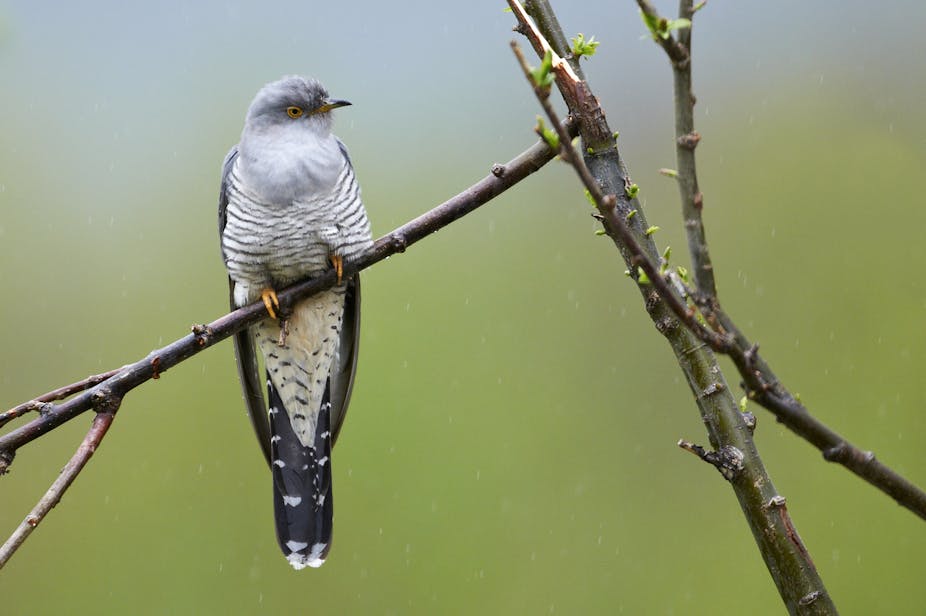A great deal of attention has been given to how, why and where birds migrate between continents. But the complexities of migratory movements restricted to one continental land mass have largely been overlooked.
Efforts are being stepped up to harmonise conservation action between and within continents. In 2011 the United Nation (UN) Convention on the Conservation of Migratory Species of Wild Animals passed a resolution to develop an action plan for the conservation and protection of migratory landbirds in the African-Eurasian flyways region. This was in response to significant declines in global populations of a number of migratory landbirds.
A review of migratory bird species that breed in Europe and winter in Africa highlight a decline between the 1960s and early 1980s of species wintering in the Sahel, a semiarid region extending from Senegal eastward to Sudan. There was also a second major decline after the 1980s of species wintering in forest zones. While there is some knowledge about the drivers of these declines in Europe, there is less information for Africa.
Agreement on what needs to be done
Action on the UN resolution, involving governments and key nongovernmental organisations like BirdLife International, led to the creation of a working group to focus on African-Eurasian migratory landbirds. The group developed an action plan detailing specific recommendations that address particular threats. The threats include habitat loss, excessive hunting, collision and wildlife diseases.
The plan complements:
the Agreement on the Conservation of African-Eurasian Migratory Waterbirds;
the Memorandum of Understanding on the Conservation of Migratory Birds of Prey in Africa and Eurasia; and
the Agreement on the Conservation of Albatrosses and Petrels.
Emphasis is placed on research that could help better direct conservation action and policy. To answer this call, research – in collaboration with the National Zoological Gardens of South Africa and the South African National Biodiversity Institute – set out to investigate migration connectivity in intra-African migratory landbird species. The transdisciplinary approach is expected to answer the question of migration connectivity across Africa.

Birds on the short list
The initial focus of the research is on a shortlist of species that occur across western, eastern and southern Africa. The basic questions we asked are: what and where are the barriers to migration across Africa?
Cuckoos, bee-eaters and kingfishers have been shortlisted because they feed on insects. In the case of kingfishers, focus is on the insectivorous, not the the fish-eating ones. With insectivorous species that migrate, it is possible to test whether the seasonal timing of their movement is influenced by the migration of their prey insect groups. This offers a chance to investigate the additive effect of threats to different animal groups.

The main aspect of the fieldwork involves catching and ringing the birds. Bird ringing – referred to as bird banding in the US – involves trapping a bird and placing a uniquely numbered aluminium or plastic identification ring or tag it. The bird is able to carry the ring or tag with minimal effect on its survival. It can then be identified as an individual whenever and wherever it is re-trapped. Bird ringing helps us understand the movement patterns of individual birds.
This can be used to inform more accurate conservation actions. Conducting this project across Africa offers access to the different national and sub-regional bird ringing schemes. Bird ringing in Africa does not have the same historical dataset or network of ringers across the continent as is found in Europe or North America. But the South African ringing scheme is one of the most developed sub-regional ringing schemes on the continent. There is an ongoing effort to strengthen linkages between different ringing schemes, and ringing information from this project will contribute to existing databases.
What’s being collected
The research project includes using DNA extracted from tissue samples collected from the birds that have been ringed to assess genetic differentiation. This involves determining the level of gene flow between populations across the continent. A high degree of gene flow indicates individuals from the populations are interbreeding. A low degree of gene flow would suggest a geographically isolated population, or individuals of one population not breeding with another population even where their range overlaps. DNA extracted from a museum specimen is being used to check if the current degree of gene flow is the same for historic populations.
Stable isotope elements like carbon, nitrogen, oxygen and hydrogen have a unique signature at different locations and seasons. These stable isotopes – found in tissue cells, like wing feathers, that grow as the bird migrates – are being analysed. The analysis enables the comparison with what is known of isotope signatures across Africa. This comparison will give a broad indication of where in Africa the particular feathers were grown and the route the bird travelled during its annual cycle.
The differences in bird calls among populations across Africa are also being investigated. Vocalisation in a population can be a strong response to local conditions and point to variations between populations that could lead to the evolution of sub-species. Sub-speciation often occurs when populations become isolated. Small, isolated populations face the risk of a genetic bottleneck that might eliminate them.
In addition, avian pathogens responsible for diseases like avian malaria are studied from tissue samples collected in the field. This indicates the prevalence of diseases in avian populations across Africa.
Intra-African migrants have a population that is restricted to the African continent. This makes threats like habitat loss more profound. Studying their movement patterns will show the challenges these species encounter on the continent.

